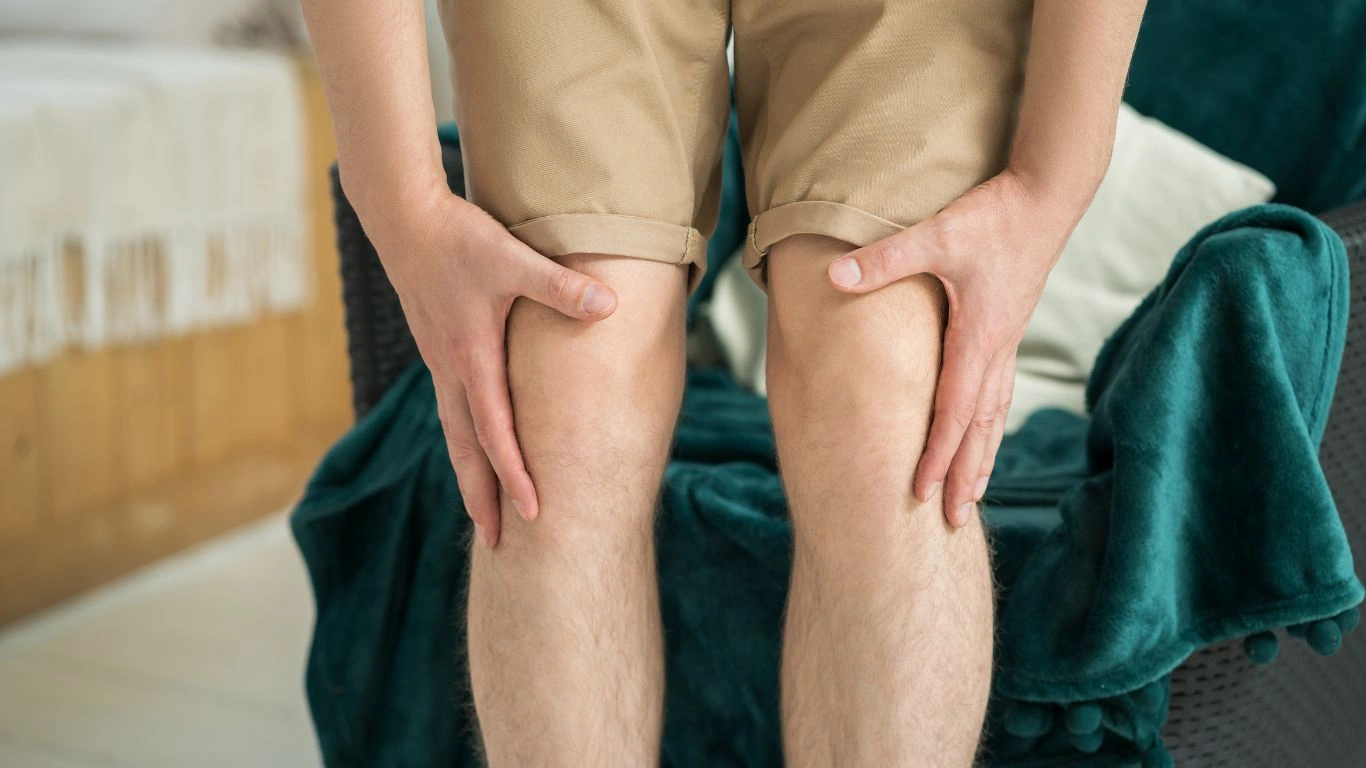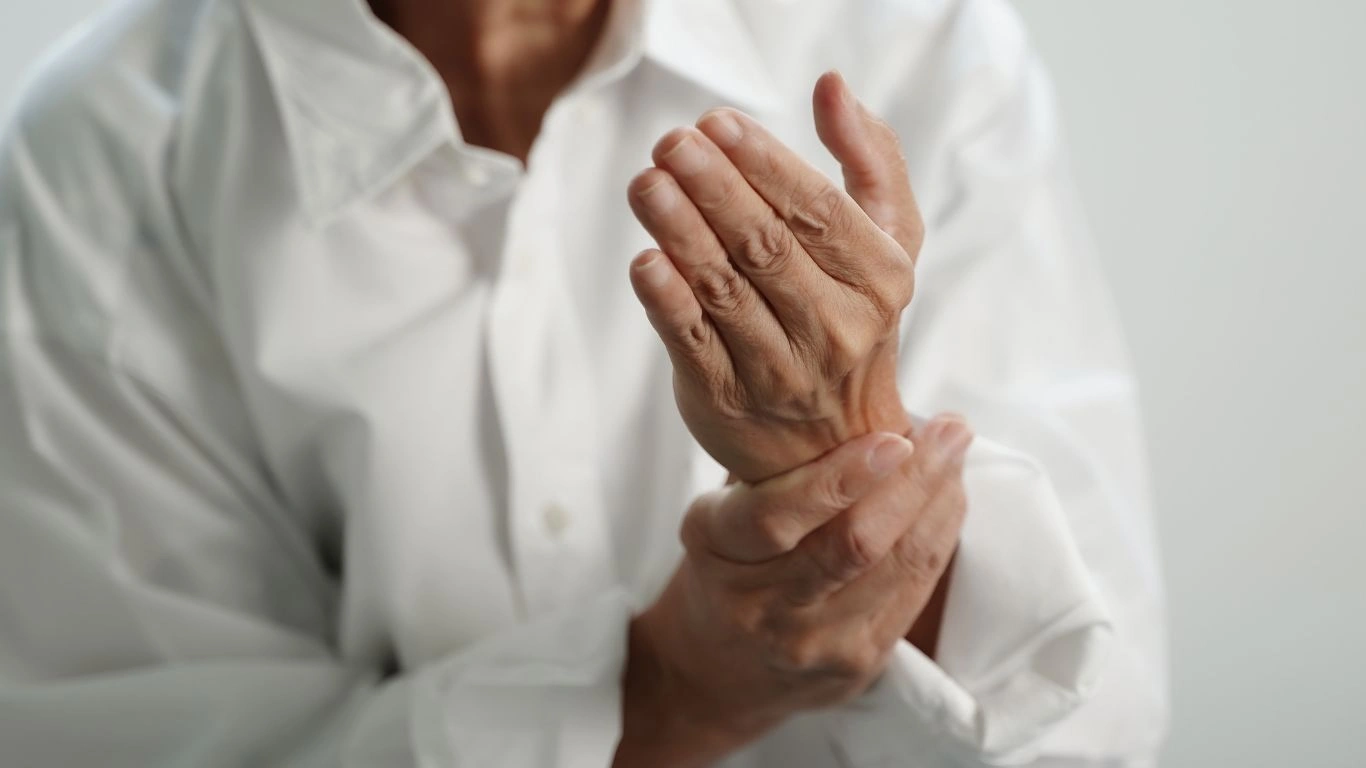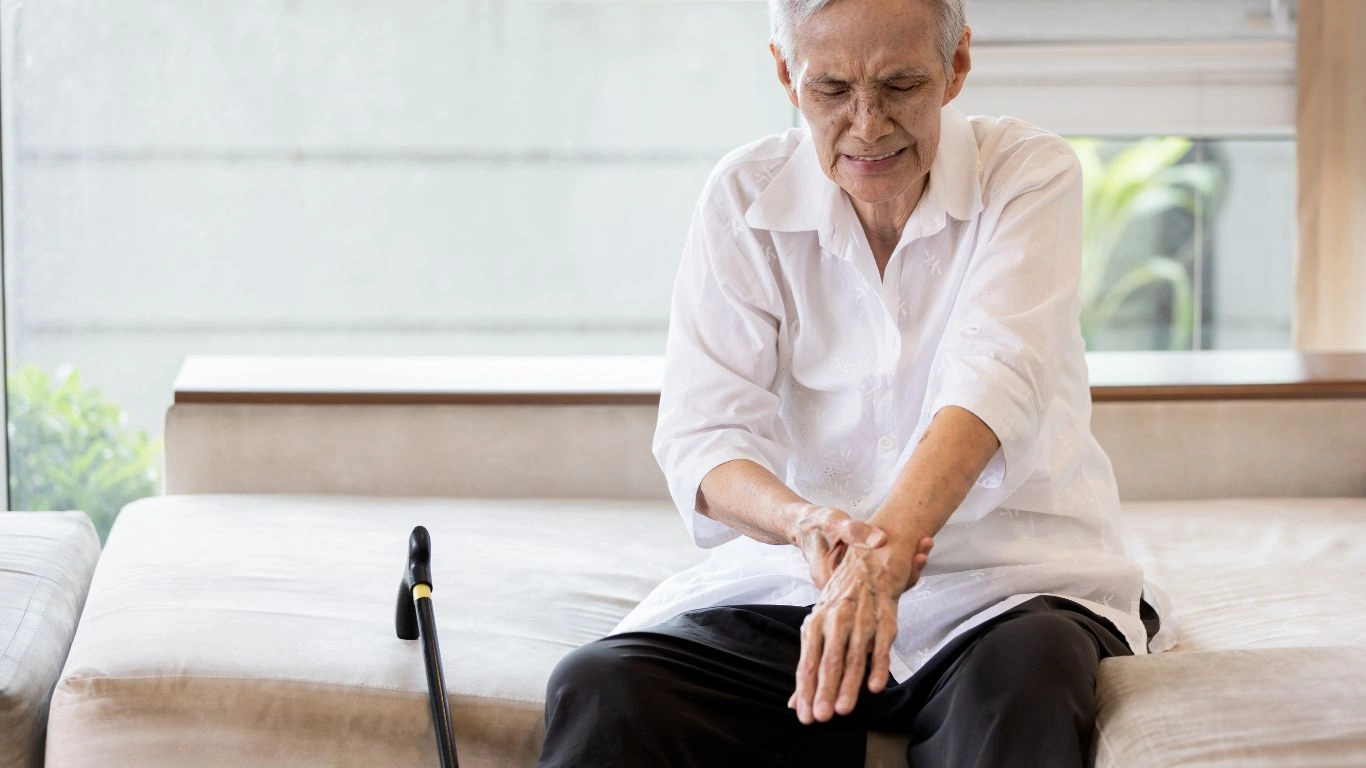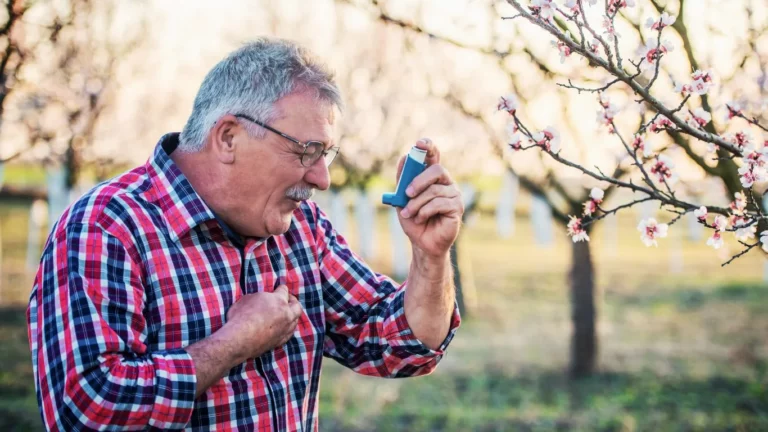Stop Joint Damage Fast: Preventing Deformities in Rheumatoid Arthritis
Preventing joint deformities in rheumatoid arthritis isn’t just about popping pills and hoping for the best. It’s a combination of daily habits, consistent care, and knowing your body like the back of your hand. I’ve spent years walking alongside patients who were scared of what the future might hold for their joints, and let me tell you—being proactive changes everything. Whether you’re newly diagnosed or have been living with RA for a while, understanding how to protect your joints is absolutely essential. This is where we get real about prevention—not perfection, but progress.
Understanding How RA Affects Your Joints

What’s Really Going On in There?
RA is like that annoying houseguest that shows up uninvited and starts rearranging your furniture. Except instead of furniture, it’s your immune system targeting your joints—especially the small ones in your hands and feet. The result? Inflammation that eats away at cartilage, bone, and soft tissue like synovium. Over time, this can cause joints to lose their shape and alignment, leading to permanent deformities.
Common Joint Deformities in RA
You’ve probably heard of swan neck, boutonnière, or ulnar drift—these are some of the classic RA deformities. They’re not just cosmetic. They affect everything from gripping a toothbrush to opening a jar of peanut butter. Once they develop, they’re tough to reverse. But the silver lining? With the right strategies, we can often prevent them from happening in the first place.
The Power of Early Intervention

Why “Catching It Early” Actually Matters
One of the most powerful lessons I’ve learned in clinic is this: the sooner we act, the better. I can’t tell you how many patients have looked back and said, “I wish I’d started treatment sooner.” If RA is left unchecked for even a few months, joint damage can sneak up faster than you’d expect.
That’s why early diagnosis and aggressive treatment are gold. Rheumatologists often talk about a “window of opportunity”—typically the first 6 to 12 months after symptoms begin—when treatment can really change the course of the disease. That means if your joints feel stiff, sore, or swollen for more than a few weeks, don’t wait. Speak up. Get it checked.
DMARDs, Biologics & All That Jazz
You might’ve heard about medications like methotrexate or biologics like Humira or Enbrel. These aren’t just fancy drug names—they’re tools to calm your immune system and stop it from attacking your joints. Are they perfect? No. But when used consistently and monitored properly, they dramatically reduce the risk of deformities in most patients.
As a Nurse Practitioner, I always stress this to my patients: Take your meds as prescribed, even when you feel okay. RA can be sneaky. Skipping doses can lead to flares that cause more damage than you might see on the surface.
Movement Is Medicine (Yes, Really)

Why Staying Active Helps Prevent Deformities
Now, I know the idea of exercising when your joints hurt sounds ridiculous—but hear me out. I’m not talking about training for a marathon. I’m talking about gentle, joint-friendly movement that helps keep muscles strong and joints flexible. Think of it like oiling a creaky hinge—it just works better when you keep it moving.
Some of my patients swear by tai chi or water aerobics. Others prefer stretching, walking, or guided physical therapy. The key is to find what works for you and be consistent. Even 10-15 minutes a day can make a difference over time.
Best Types of Exercises for RA Joints
- Range-of-motion exercises: Simple movements that help keep joints flexible
- Strength training: Light resistance to support the joints without overloading them
- Low-impact cardio: Swimming, biking, or walking on soft terrain
- Stretching: Yoga or guided stretching routines to relieve stiffness
Quick tip: always warm up and cool down, and if anything hurts more than a mild ache, scale back. Pain is information—don’t ignore it.
Daily Habits That Make a Big Difference
Protecting Your Joints During Everyday Tasks
This is one area I love diving into with my patients—because it’s practical and doable. Little adjustments in your day-to-day routine can absolutely reduce wear and tear on your joints. And yes, they really do add up.
- Use assistive devices: Jar openers, button hooks, and ergonomic tools are game changers.
- Modify your grip: Use your whole hand or forearms instead of just your fingers when lifting things.
- Alternate tasks: Don’t do repetitive motions for long stretches—mix it up.
- Take breaks: If you’re typing, gardening, or doing crafts, stop every 20-30 minutes to stretch and relax those joints.
One of my long-time patients said it best: “I learned to work *with* my body, not against it.” And that shift in mindset? That’s what keeps you moving forward without burning out or breaking down.
Eating for Joint Health: Food as Your Daily Ally

Can Your Diet Really Make a Difference?
Oh, you bet it can. I’ve had patients who were skeptical at first—thinking diet was just a “nice-to-have” rather than something that actually impacts their RA. But after a few weeks of focusing on anti-inflammatory foods, many of them started noticing less stiffness, fewer flares, and an overall improvement in how their joints felt.
Now, I’m not saying food is a miracle cure. But it’s definitely part of the puzzle. What we eat either helps calm inflammation or it adds more fuel to the fire. And when we’re talking about preventing joint deformities in rheumatoid arthritis, keeping inflammation under control is half the battle.
Top Anti-Inflammatory Foods to Try
- Fatty fish: Salmon, sardines, and mackerel are packed with omega-3s, which help reduce inflammation.
- Leafy greens: Spinach, kale, and Swiss chard are nutrient-dense and joint-friendly.
- Turmeric: Curcumin, the active ingredient, has natural anti-inflammatory properties.
- Berries: Loaded with antioxidants and fiber—plus, they taste amazing.
- Olive oil: Swap out processed oils for this Mediterranean staple.
I often tell my patients: it’s not about perfection, it’s about patterns. Focus on building meals around whole, fresh foods. Keep processed stuff to a minimum. And don’t stress over an occasional splurge. It’s what you do most of the time that counts.
Managing Stress (Because Yes, It Affects Your Joints)

The Inflammation-Stress Connection
Let’s talk stress for a second—because, wow, it is sneaky. Most people don’t connect emotional stress to joint pain, but they absolutely go hand in hand. When we’re stressed, our bodies pump out cortisol and other inflammatory chemicals. And if you’re already living with RA, that’s like tossing gasoline on a slow-burning fire.
Some of my patients have seen flare-ups after family conflicts, tough work weeks, or even just poor sleep. It’s not all in your head—it’s actually in your immune system. That’s why stress management is a key piece of preventing joint deformities in rheumatoid arthritis.
Simple Ways to Keep Stress in Check
- Mindfulness: Even five minutes of deep breathing or guided meditation can help.
- Movement: Gentle yoga or stretching not only helps your joints, but your mind too.
- Connection: Talking to someone who “gets it” (like a support group or therapist) can lighten the load.
- Sleep: Aim for 7-9 hours. Your joints do a lot of healing while you rest.
I had one patient who started journaling before bed each night—not pages and pages, just a few bullet points. It helped her sleep better and made her more aware of how stress was affecting her symptoms. Sometimes the small stuff really is the big stuff.
When Surgery and Splints Enter the Picture

Don’t Wait Until It’s “Too Late”
Now, I know surgery sounds scary—and let’s be honest, it’s not the first route we go down. But sometimes, when joint damage has already begun, surgical interventions or supportive devices like splints can help preserve function and prevent further deformity. And they’re not just for severe cases either.
Hand splints, for example, can help align fingers during flare-ups, reduce pain, and slow down deformity in joints that are starting to drift. I’ve seen splints make a huge difference, especially for people who use their hands a lot at work or home. Think hairdressers, artists, mechanics—people whose hands are everything.
Working With Occupational Therapy
This is where OTs shine. Occupational therapists are absolute rockstars when it comes to joint protection techniques and custom splinting. I always recommend my patients see one early—don’t wait until things get really bad. A good OT will teach you how to modify tasks, protect your joints, and even suggest adaptive tools that make life easier.
Pro tip: If you’re noticing any changes in joint shape, grip strength, or stability—ask about splints. They’re not a last resort. They’re part of a solid prevention plan.
Tracking Progress Without Obsessing
Listen to Your Body (Seriously)
I tell my patients all the time: “You know your body better than anyone.” That gut feeling you get when something’s off? Trust it. Track your symptoms—not obsessively, but consistently. Use a journal or app to jot down pain levels, stiffness, fatigue, and flare triggers.
This info isn’t just helpful for you—it’s gold for your care team. When we can spot patterns early, we can tweak treatment plans before damage occurs. That’s how we stay ahead of deformities, instead of constantly reacting to them.
Red Flags to Watch Out For
- Swelling that lasts more than a few days
- Loss of motion in one or more joints
- Visible changes in joint shape or alignment
- Worsening fatigue without explanation
If you notice any of these, don’t brush them off. Let your provider know. I always say: it’s better to check in early than wait until the damage is done.
And please, don’t feel like you’re “bothering” us. I’ve had patients apologize for asking too many questions—when really, they were advocating for their health in the best way possible. We’re a team, and your voice matters.
Building a Long-Term Routine That Works for *You*

No One-Size-Fits-All Plan
If there’s one thing I’ve learned in my years as a Rheumatology Nurse Practitioner, it’s that every person with RA walks a different path. What works brilliantly for one patient might totally miss the mark for another. And that’s okay! Preventing joint deformities in rheumatoid arthritis isn’t about following some universal checklist — it’s about figuring out what fits your lifestyle, your needs, and your goals.
I always encourage my patients to think of this as a long game. RA isn’t a sprint; it’s a marathon. So your plan needs to be sustainable. That might mean scheduling weekly meal prep to support an anti-inflammatory diet, setting daily reminders to do hand stretches, or checking in with a mental health provider once a month. The goal is progress, not perfection.
Creating a Personalized Joint Care Toolkit
Here’s a quick example of what a patient toolkit might include — and again, totally customizable depending on your routine:
- Daily medications: With reminders or a pill organizer
- Hand or wrist splints: For support during flare-ups or repetitive tasks
- Anti-inflammatory recipes: Easy go-tos for busy days
- Exercise plan: Maybe Monday-Wednesday-Friday pool time or daily stretching
- Journal or app: For symptom tracking and mood check-ins
- Provider contact list: Rheumatologist, OT, PT, mental health therapist
The key here is consistency — showing up for your joints a little each day instead of waiting until they’re screaming for help.
The Role of Support Systems in Prevention

You Don’t Have to Do This Alone
I’ve watched strong, independent patients try to carry the weight of RA all by themselves, and while I totally get the urge to “power through,” that route often leads to burnout — or worse, flares that spiral out of control. So here’s my gentle reminder: lean on people. Let your loved ones help. And if your family or friends don’t fully understand RA (which happens a lot), connect with folks who do.
Support groups — whether local or online — can be a game-changer. I’ve had patients who joined one and said, “I finally feel seen.” That sense of community? It’s powerful medicine all on its own.
Ways to Build Your Support Network
- Join a local RA group: Many hospitals or clinics host monthly meetups.
- Explore online forums: Look for RA communities on platforms like Reddit or Facebook.
- Talk to your provider: We often know about local resources you may not find on Google.
- Include loved ones in appointments: Hearing things directly from your provider can help them better understand what you’re going through.
And don’t underestimate the small stuff — like a friend who checks in during flares, or a partner who helps open jars. Those little acts of care matter more than they know.
Regular Check-Ins: Why Monitoring Matters More Than You Think
It’s Not Just About Managing Symptoms
Prevention is proactive. That’s why regular appointments and lab work aren’t just “routine” — they’re vital tools to stay ahead of the disease. Even when you’re feeling fine, inflammation can still be simmering under the surface. It’s sneaky like that.
I often tell my patients, “Your labs are your early warning system.” CRP and ESR levels, imaging scans, joint exams — they all give us a window into what’s happening internally, often before symptoms flare up. So if your provider recommends a 3-month or 6-month follow-up, don’t skip it.
And if something feels off? Don’t wait for your next visit. Call, message, send a smoke signal — whatever it takes. The earlier we catch it, the less damage is done.
What to Discuss During Appointments
- Any new or worsening joint pain or stiffness
- Changes in medication tolerance or side effects
- Fatigue, mood shifts, or sleep disruptions
- Activity limitations — even subtle ones
- Emotional or mental health struggles
These conversations don’t have to be long or formal — they just need to be honest. The more open you are, the more tailored your care can be.
Wrapping It All Together: You’re In Control More Than You Think
RA Doesn’t Get to Call the Shots
It might not always feel like it, but you have more power than you realize when it comes to protecting your joints. Preventing joint deformities in rheumatoid arthritis is about little wins adding up — choosing to stretch even when you’re tired, speaking up when something doesn’t feel right, trying that turmeric tea even though it smells a little weird at first (yep, been there).
I’ve watched so many of my patients reclaim their strength, their joy, and their freedom by getting ahead of their RA. And trust me — I’ve seen how powerful that shift is when it starts from the inside out.
Final Encouragement
If nothing else sticks from this entire series, let it be this: you are not powerless. You have tools. You have a voice. And with the right care, consistency, and mindset, you can absolutely protect your joints and keep doing the things you love.
References
Disclaimer
This article is intended for informational purposes only and should not be considered a substitute for professional medical advice, diagnosis, or treatment. Always consult with your rheumatologist or healthcare provider regarding any questions or concerns about your specific condition or treatment plan.

Tarra Nugroho is a dedicated Nurse Practitioner with a strong foundation in family and preventive care. She brings both compassion and clinical expertise to her practice, focusing on patient-centered care and health education. As a contributor to Healthusias.com, Tarra translates medical knowledge into clear, empowering articles on topics like women’s health, chronic disease management, and lifestyle medicine. Her mission is simple: help people feel seen, heard, and informed—both in the clinic and through the content she creates. When she’s not caring for patients, Tarra enjoys weekend hikes, plant-based cooking, and curling up with a good health podcast.






